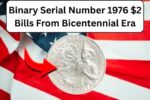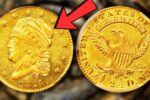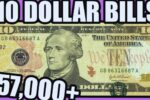A Hidden Treasure in Old Cash
Many people don’t think twice about $2 bills, but some of these rare notes from 1928 to 1976 are now worth thousands of dollars. Collectors are paying big money for specific versions of these bills, with some fetching $4,500 or more at auctions. The $2 bill has always been a bit unusual in the U.S., often seen as a novelty rather than everyday cash. But for those who know what to look for, these old bills can be a goldmine. Let’s dive into what makes certain $2 bills so valuable and how you can spot one.
Why These Bills Are Special
The value of $2 bills from this period comes down to a few key factors: their series year, condition, and unique features. Bills from 1928, for example, are part of the earliest series and were printed in smaller numbers, making them harder to find. Those in crisp, uncirculated condition can be worth much more than worn ones. Another big factor is the red seal on some bills from the 1928 and 1953 series. Unlike the green seals on modern currency, red seals were used on older U.S. notes, and collectors love them for their distinct look. Star notes, which have a star symbol in the serial number, are also highly sought after because they were printed to replace damaged bills, making them rare.
Key Features to Look For
If you’re checking your old $2 bills, here are some things to watch for:
- Series Year: Check the year printed on the bill. Bills from 1928, 1953, and 1963 are often the most valuable.
- Red Seal: Look for a red treasury seal, especially on 1928 or 1953 bills.
- Star Notes: A star in the serial number means it’s a replacement note, which can boost value.
- Condition: Bills that look new, with no folds or tears, are worth more.
Serial numbers also matter. Unique patterns, like low numbers (00000001) or repeating digits, can drive up a bill’s price. For example, a 1928 red seal star note in great condition recently sold for $5,200 at an auction.
How Much Are They Worth?
The value of these $2 bills varies widely based on their features. Below is a quick guide to give you an idea:
| Series Year | Condition | Estimated Value |
|---|---|---|
| 1928 (Red Seal) | Uncirculated | $1,500-$5,000+ |
| 1953 (Red Seal) | Circulated | $50-$200 |
| Feature | Value Boost |
|---|---|
| Star Note | 2x-5x regular value |
| Unique Serial Number | $500-$2,000 extra |
These numbers are just a starting point. Rare bills with perfect condition or unique serial numbers can go for much higher at auctions or to private collectors.
Where to Find and Sell Them
You might have a valuable $2 bill tucked away in a drawer, old wallet, or family collection. Check places like estate sales, flea markets, or even your local bank, where old currency sometimes pops up. If you think you have a rare bill, get it appraised by a professional currency dealer or auction house. Websites like eBay or Heritage Auctions are good places to see what similar bills are selling for. Be cautious when selling, as condition matters a lot, and fakes are out there. Always consult an expert to verify authenticity.
A Growing Hobby
Collecting rare $2 bills is becoming more popular as people learn about their potential value. The thrill of finding a bill worth thousands is exciting, and the history behind these notes adds to their appeal. Whether you’re a collector or just curious, checking any old $2 bills you have could lead to a surprising discovery. So, next time you come across one, take a closer look, you might be holding a small fortune.




